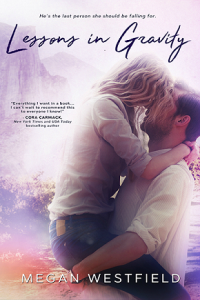In Support of New-Adult Fiction
 In the world of writing, we all know that we should not write to trends, and we all know the reasons why that doesn’t work. Nevertheless, we all hope that when our work-in-progress someday emerges into the world, it will fit right in with the current mega-bestsellers.
In the world of writing, we all know that we should not write to trends, and we all know the reasons why that doesn’t work. Nevertheless, we all hope that when our work-in-progress someday emerges into the world, it will fit right in with the current mega-bestsellers.
That happened to me with new-adult fiction.
2012 was the year I first became aware of the thing called new-adult (NA). I had just finished drafting my Yosemite National Park rock climbing novel, Lessons in Gravity. My main character was 22, embarking on her film school capstone internship, a physical and metaphorical transition between her semi-sheltered college life and the real world where she would face the reality of a six-figure college debt while working minimum wage film jobs, if she could get a job at all.
I knew from the start I was writing something that wouldn’t squarely fit into an existing genre or category. First, my book was a love story, but I was committed to not hinting at wedding bells at the end, which seemed to be the norm in contemporary romance. Second, the sexual explicitness in my book was low, which might typically place it in the category of “sweet romance,” except that my book had dark and angsty undertones.
I knew that I would either have to transform my main character into a high school senior and turn the book into upper-YA, or change some fundamental things about the story so that it would fit into contemporary romance. Neither felt right.
Enter NA. A category just for 18 to 26-year-olds who grew up loving Harry Potter, Twilight, and Hunger Games but were now facing a publishing gap with books that had characters their age. Instead of Happily Ever After, it could be Happily Ever After For Now. It was a grassroots publishing movement initiated in self-publishing and e-publishing, and it was taking off like wildfire. Cora Carmack, Colleen Hoover, Rebecca Yarros, Brenna Aubrey, Abbi Glines, AJ Pine, Molly McAdams, Jennifer Armentrout, Tammara Webber, and Jamie McGuire were some of the pioneering authors.
Not only was my Lessons in Gravity solidly an NA title, I realized every one of the long-fiction works I’d ever written was NA, including my first finished work—a screenplay. The day I discovered NA was a huge moment of celebration. I didn’t have to age-up or age-down my characters: the story could be accepted just as it was supposed to be.
The problem was, in real life, I was no longer a new adult, rather, a full-fledged adult, and Lessons in Gravity had to be pushed aside through a series of job-related relocations, pregnancies, birth of children, and those foggy newborn years. By the time I’d reached a point where I could amply revise and query Lessons in Gravity, the NA trend had apparently turned from being The Next Big Thing to The New Untouchable, and was tangled up in an undeserved stereotype of being nothing but “sexed up YA.”
I don’t want to get into publishing trends here (nor am I qualified), but let me at least assert that the NA trend has not quieted yet. In fact, at a major writing conference I attended last summer, publishing industry panelists described NA to be resurging in an expanded way. And at Entangled Publishing (which published Lessons in Gravity four months ago in their dedicated NA imprint, Embrace), NA authors and titles are among their most successful.
YA has always been known for coming of age stories, but in our modern era’s millennial generation, the true coming of age happens well past the mid-teenage years. It’s that first period of time where you can no longer fall back on the safety net of Mom and Dad, or where you decide to really step out on your own.
These days, this transition to adulthood happens in college, or right after college. Or, it could be joining the military or getting out of the military. It could be a gap year, leaving the town you grew up in, starting your first job, deciding whether or not to attend graduate school, or finally leaving your parents’ house ten years after finishing high school.
There are so many things to explore during this NA phase of life: career, first romantic relationships as adults (this is what our “sexed up YA” NA books explore), living with roommates, and the big question of reconciling “what do you want be when you grow up” with “how am I going to pay my bills?” In short, NA is one word: adulting.
 Like happens with YA, readers outside of the target readership read NA. NA books are perfect for 16 and 17 year olds looking ahead to what will be happening after high school, and they are also great for older readers like me who love to re-live those powerful and formative NA years.
Like happens with YA, readers outside of the target readership read NA. NA books are perfect for 16 and 17 year olds looking ahead to what will be happening after high school, and they are also great for older readers like me who love to re-live those powerful and formative NA years.
In my opinion, one of the reasons readers had such an immediate connection to NA is because of chick lit’s absence. Yes, the genre’s gone, but we still need books like that to guide, entertain, and inspire us though our early twenties! The way I see it, NA is simply chick lit that has expanded beyond its own negative stereotype of stilettos, martinis, and Manhattan. And by definition, how many of our beloved chick lit titles could also be shelved as NA?
While I can’t speculate on the future of new-adult fiction, I can tell you what I hope to see. I hope NA can shed its reputation as “sexed up YA” once and for all and continue to expand across sub genres in the same way YA did in the 2000s. (Not that I want to lose those super-sexy NA books…I love a racy Alpha romance as much as the next girl.) I hope that other writing communities will see the value of NA, and embrace it as enthusiastically as the community of romance readers and writers has.
Regardless of trends, or the occasional stink-eye I’ve gotten from other writers who dismiss the category as a whole, I believe in NA. I love to read NA and I love to write it. And in the end, the NA stories that are on my to-be-written list can’t simply be aged up or down, because if they were, they’d lose the very essence of what made them important to tell in the first place.
=
Megan Westfield is a former navy officer who lives grew up in Washington state, attended college in Oregon, and lived in Virginia, California, and Rhode Island during her five years as a navy officer. She is now a permanent resident of San Diego with husband and two young kids. Her debut, new-adult novel, Lessons in Gravity, is set in the world of adventure filmmaking and professional rock climbing in Yosemite National Park.
Megan’s a Twitter-girl at heart, but you can also keep up with her on Instagram, Facebook, and her website.
Category: On Writing




Sometimes I need to be reminded that New Adult is about so much more than steamy romances. I stumbled upon this post and am so glad I did, because it renewed my belief that NA is the right category for what I write, even though I write speculative fiction. And, it gives me the confidence to not wither in the face of judgment and misunderstanding about what NA really is. Thanks, for the great post, Megan!
Hello Megan, enjoyed your article. I’m interested in NA because I buy popular fiction for college age students. I noticed that students read a lot of YA, lacking anything else that answers to their needs, I guess. So I began exploring NA. It is a much-needed category, if categories must be created, and a naturally interesting time to write about. I enjoy NA also–I’m one of those nostalgic readers who like re-living their youth!
I write what I must, and the world I inhabit overlaps with the lives of others. And if a trendy is bad/creepy/self-serving/greedy I hope I know enough to stay away. @LatelaMary
I don’t like being fenced in by categories. Good writing is the goal. It’s just coincidence that most of my writing is non-fiction, centering around Southwestern U.S. characters I deem worth knowing. I was delighted to discover that I’m often writing narrative history. I didn’t like history when I was in school so I changed things. I put life in my stories. I don’t care who reads them.
Narrative history centering on Southwest characters sounds like a great thing to read!